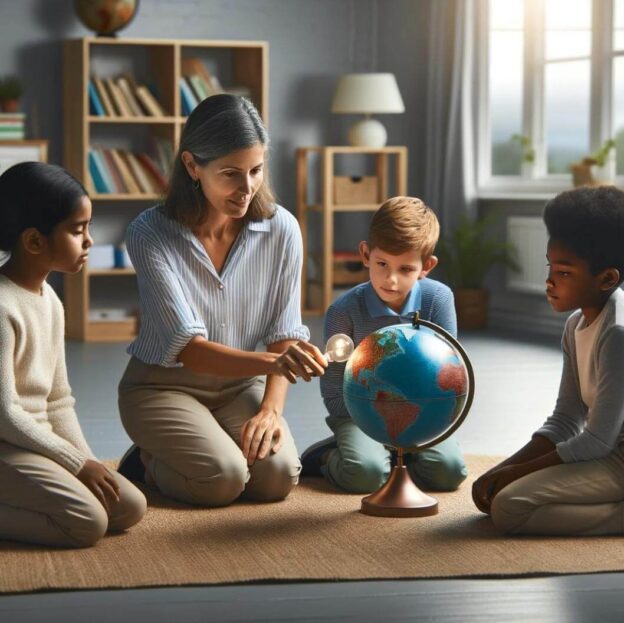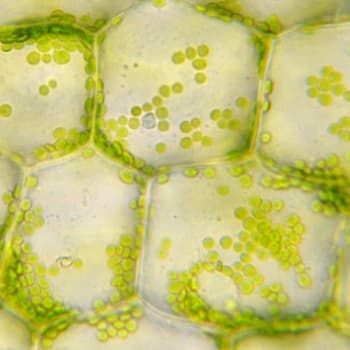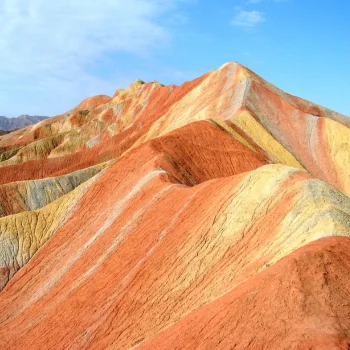Mixtures and Solutions: What’s the Difference?

What do you think of when you think of chemistry and physics? If it’s E = mc2 and 6.022×10^23 … you are way ahead. In elementary school science, we start with basic concepts that have already captured the minds of young learners. One of those concepts is the difference between mixtures and solutions.
Children are great observers and have probably started to notice the difference themselves. They may have watched sugar dissolve while making lemonade. They could have mixed dirt with water and then seen it settle out later on. Observations like these are a great way to start the conversation about mixtures and solutions. Once children reach the elementary age, they’re ready to learn about the difference between them more scientifically.
Table of Contents
- Why Is It Important to Learn About the Difference Between Mixtures and Solutions?
- Mixtures vs. Solutions
- Experiments Involving Mixtures and Solutions
- Real-World Examples of Mixtures and Solutions
- Guiding Continued Discovery
Why Is It Important to Learn About the Difference Between Mixtures and Solutions?
Learning about the difference between mixtures and solutions is important because it helps children understand the basics of chemistry. It encourages critical thinking and curiosity about how substances interact in different states and sets a foundation for future scientific learning and discovery.
Learning about mixtures and solutions gives children the foundational knowledge they need to learn about everything from chemical reactions to geological processes. It’s also applicable to their everyday lives through cooking, baking, and other tasks.

Mixtures vs. Solutions
When you introduce mixtures and solutions to your children or students, we recommend showing them some examples before diving into definitions.
By showing tangible examples, students can relate to the material with real-world context, which can help to anchor their understanding. When they subsequently encounter the formal definitions, they can more easily connect the technical language with the examples they’ve seen. This method caters to different learning styles and can make learning more interactive and engaging. Students may find it easier to grasp the concept through observation and hands-on experience rather than through abstract explanation alone. Additionally, it allows students to develop their own understanding and vocabulary to describe what they see. This can lead to a deeper and more personal grasp of the subject matter.
Examples of Mixtures and Solutions
To start the conversation, you can show children a variety of different combinations, and ask them to simply observe and discuss. You could show them:
- Sand and water (a mixture)
- Salt and water (a solution)
- Chalk powder and water (a mixture)
- Etc.
How are they different? How are they similar? These discussions will set you up perfectly to introduce what mixtures and solutions are and how they differ.
Mixtures
A mixture is the combination of two or more substances whose properties do not change upon mixing. There are two categories of mixtures:
- Homogenous mixtures, which have a uniform composition and appearance throughout.


- Heterogeneous mixtures, which do NOT have a uniform composition throughout.


Within those two categories, there are other special types of mixtures. Special heterogeneous mixtures include:
- Suspensions, like mud and water, where the particles settle out and separate over time.
- Colloids, like milk, where the particles stay mixed.
Special homogenous mixtures include:
- Alloys, which are a uniform mixture of metals.
- Solutions, which are a uniform mixture where a solute is dissolved into a solvent.
Solutions
A solution is a mixture, but it’s a special kind of mixture as we mentioned above. Solutions are comprised of two parts – the solute (the thing being dissolved) and the solvent (the thing doing the dissolving). When making salt water, for example, the salt is the solute and the water is the solvent.

So, What’s the Difference Between Mixtures and Solutions?
We just defined mixtures and solutions, and we said that solutions are mixtures. They’re a special kind of mixture with certain properties. So, asking about the difference between mixtures and solutions is kind of like asking about the difference between rectangles and squares:
- A square is a special rectangle with specific properties. All squares are rectangles, but not all rectangles are squares.
- A solution is a special mixture with specific properties. All solutions are mixtures, but not all mixtures are solutions.
In the case of solutions, we’re talking about a homogeneous mixture where the solute is completely dissolved in the solvent. It results in a uniform composition throughout. Mixtures can be either homogeneous or heterogeneous, and the components can often be separated by physical means.
This distinction is crucial in chemistry and in understanding how substances interact in our daily lives. For example, the air we breathe and the drinks we consume. So, when we look closer at the substances around us, this understanding helps us see the complexity and beauty in the simple things. If you’re eager to explore mixtures and solutions further, there’s a whole world of fun and enlightening experiments ready for you to try.
Experiments Involving Mixtures and Solutions
Getting hands-on is a fantastic way to see science in action. The experiments we’ve lined up here will help you understand mixtures and solutions through real-world examples that you can touch, see, and play with. Each activity is designed to highlight the unique properties of mixtures and solutions in a way that’s both fun and educational. So, roll up your sleeves – it’s time to mix, dissolve, and explore the essence of everyday chemistry!
The following experiments are all part of our Combining and Separating lesson where we introduce mixtures, solutions, and reactions. This particular selection explores mixtures and solutions while providing opportunities to practice different lab techniques like filtration.
Separate Sand, Salt, and Iron

Can you figure out a way to separate a mixture of sand, salt, and iron back into its original components? Hone your lab skills while learning more about distinct particle interactions in the Separate Sand, Salt and Iron experiment.
First, you’ll combine the substances in equal parts. Then, you’ll devise a plan. You’ll want to take some time to think about each of their different properties, and what tools you could use to separate them. Observe the mixed materials closely – how are they different? How do they respond differently to things like magnets, water, and filters? Let your observations guide your separation strategy. The order you do it in matters, and creative thinking is key!
How Does Soap Work?

When oil and water combine, they form a heterogeneous mixture where the two liquids remain visibly separate. Their lack of uniformity is so pronounced that we commonly say they don’t mix at all. Sometimes we need them to mix though, like when we are trying to use water to rinse oil off of something. In this case, we usually add soap! How does soap help oil and water mix though?
You’ll find out in How Does Soap Work?
Hydrophobic Hot Cocoa

Oil and water are famous for not mixing very well. There are other substances that don’t mix with water either. We say those substances are “hydrophobic” – “hydro” means water, and “phobic” means scared. Hydrophobic things are scared of water!
You know what it looks like when a hydrophobic liquid mixes with water, but what about a hydrophobic solid like cocoa powder? In the Hydrophobic Hot Cocoa experiment, you’ll perform a cool trick to see one way it can turn out. Then, you can read more about hydrophobicity and its implications.
Filtering a Suspension

In the Filtering a Suspension experiment, you’ll use filters to learn more about a special property of solutions. You’ll start by creating mixtures of sand & water, chalk powder & water, and salt & water. Then, you’ll filter them all and see what happens. Pay close attention to what remains on the filter and what passes through.
The results will show you a clear picture of the difference between a solution, and a really well-blended mixture called a suspension.
Real-World Examples of Mixtures and Solutions
Once your children have experimented with mixtures and solutions, and have a good grasp on what they are, they can start to learn more about their real-world scientific applications.
Crystals, for example, form from supersaturated solutions.

Sedimentary rock is created from mixtures of water and eroded earth, which settle in layers and solidify over time.

In a Montessori classroom, this study of mixtures and solutions is one of the first scientific topics we introduce because it leads into so many other lessons about the scientific processes that shape our world and our Universe.
Guiding Continued Discovery
As we’ve seen, mixtures and solutions are not just scientific terms; they are the building blocks for understanding the intricate relationships within our environment. From the crystals and sedimentary rocks that children learn about to the universal principles they represent, these concepts are an integral part of Cosmic Education.
So, as we wrap up this guide on mixtures and solutions, remember that these concepts lay the groundwork for the progression of science education. Science topics in Montessori are carefully structured, starting from simple mixtures and moving to more complex material behavior. Each topic naturally leads into the next, which helps students build a solid foundation of scientific understanding. As children move from learning about mixtures and solutions to delving into chemistry, earth and space science, ecology, etc., they develop a clearer picture of the physical world, step by step. It’s a thoughtful way to introduce the wonders of science, showing how everything from a grain of salt to a rock formation fits into a larger scientific framework.
This is something we’ve done with our lessons at Montessori Laboratory. We start with the simple and progress to the complex. We introduce the big picture, and then we dive into the details. We learn about science through an interconnected series of lessons that build on each other. Want to see what it’s all about? Take a look at our free lessons!
The First Great Lesson
Where did the stars come from? And the Sun? How was our Earth created? And what about the rest of…
Combining and Separating
Why does sand settle to the bottom of the ocean, but salt mixes in? How do people get sea salt out…
How Did Humans Discover Fire?
When did we start using fire? What 3 components does fire need to burn?






Responses